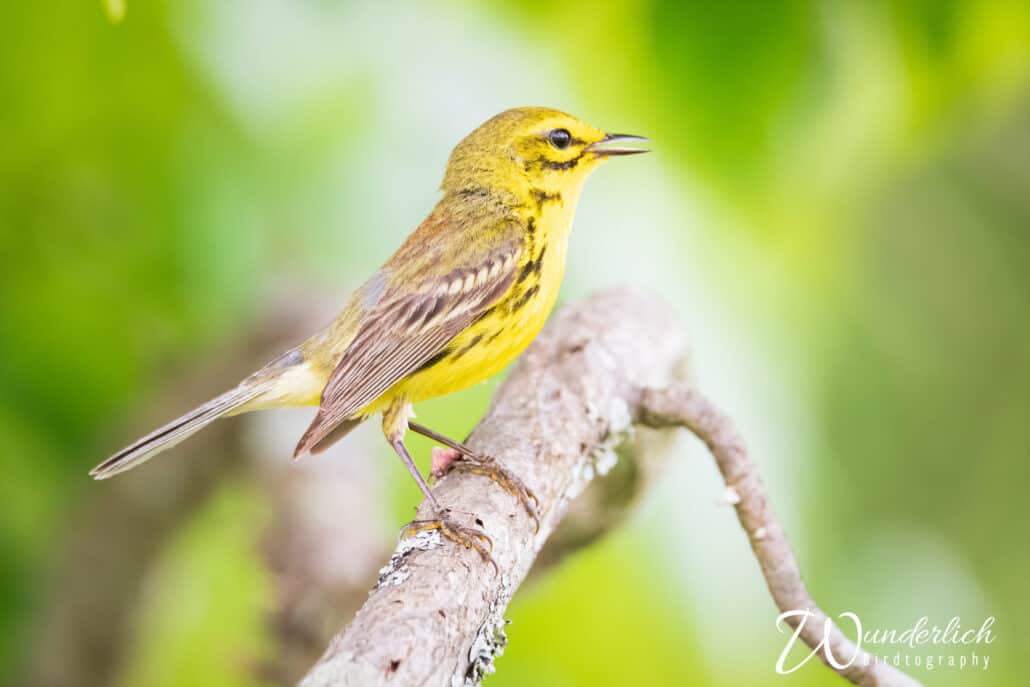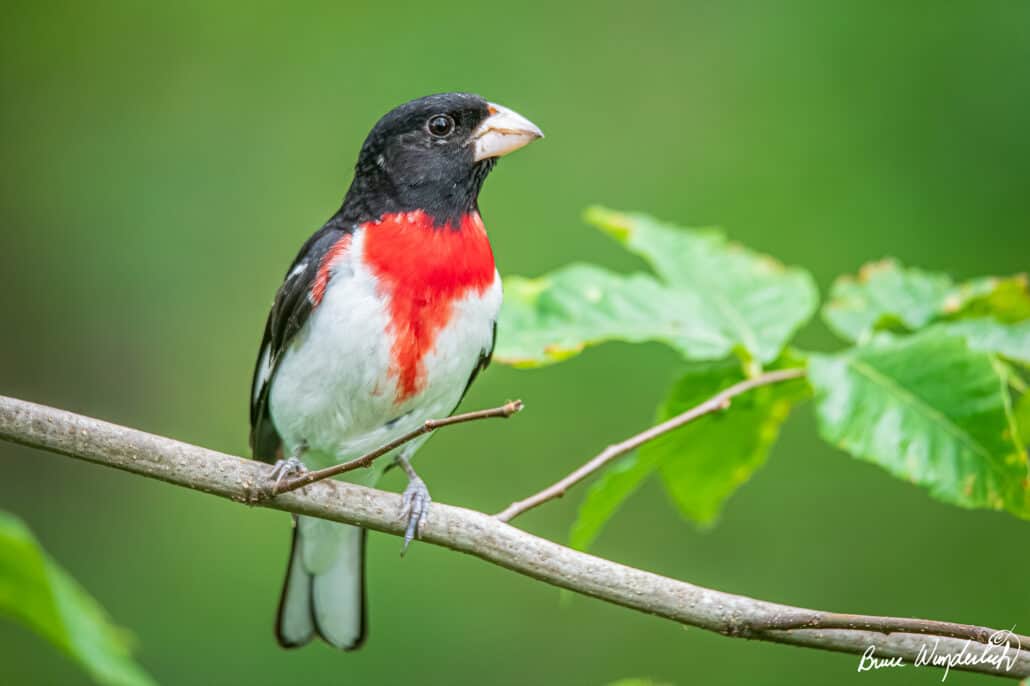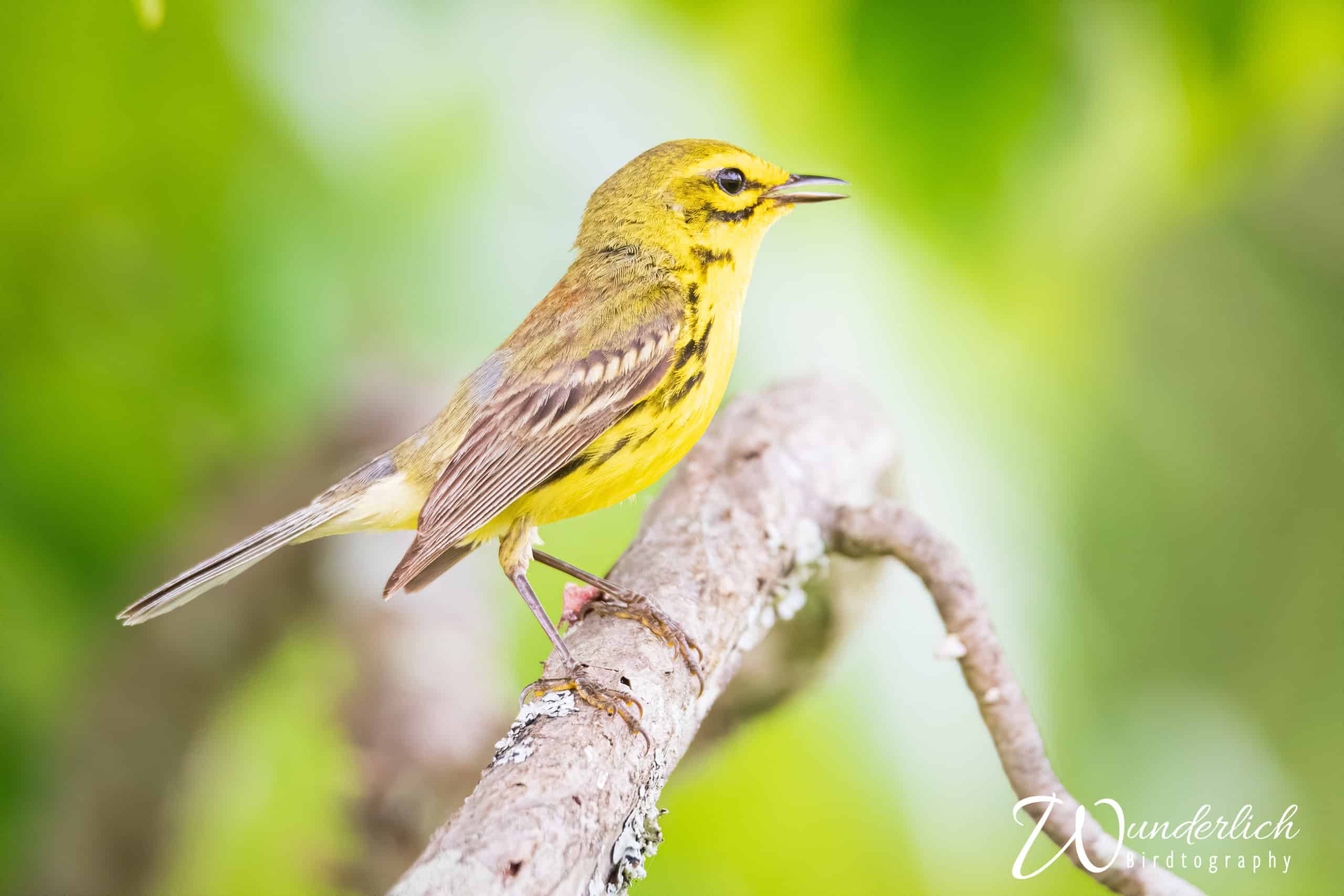
I recently led a Bird Watcher’s Digest Birdtography Reader Rendezvous in Great Smoky Mountains National Park. I arrived a few days ahead of the tour to scout out locations and spend a little time by myself with the birds and bears of the eastern Tennessee, especially in my favorite location, Cades Cove. The Cove’s 11-mile, one-way loop road can be hectic during the summer, filled with people hoping to see and photograph black bears. To avoid the crowds, I like to spend time on the cross-through roads, Sparks Lane and Hyatt Lane.
As a bird photographer, I had always depended on my eyesight to find birds to photograph. However, recently I have learned the importance of listening to birds and recognizing their calls to help me find birds to photograph. On my first day on Hyatt Lane, I heard a bird that I had never heard before. This bird’s ascending zee zee zee zee zee was a mystery to me, so I made a recording of it on my phone and hoped to figure out the bird’s identity later.
The next day Dawn Hewitt, my co-worker and the editor of BWD, arrived for the Rendezvous. She is a long-time, experienced birder and is impressive at birding by ear. I was excited to play my recording for Dawn, and when I did, she thought for a minute, then looked at me and smiled. “It’s a prairie warbler!” she declared. Just a few days before I left for the Smokies, Dawn and I had discussed warbler species that I had never photographed before; prairie warbler was on the list.
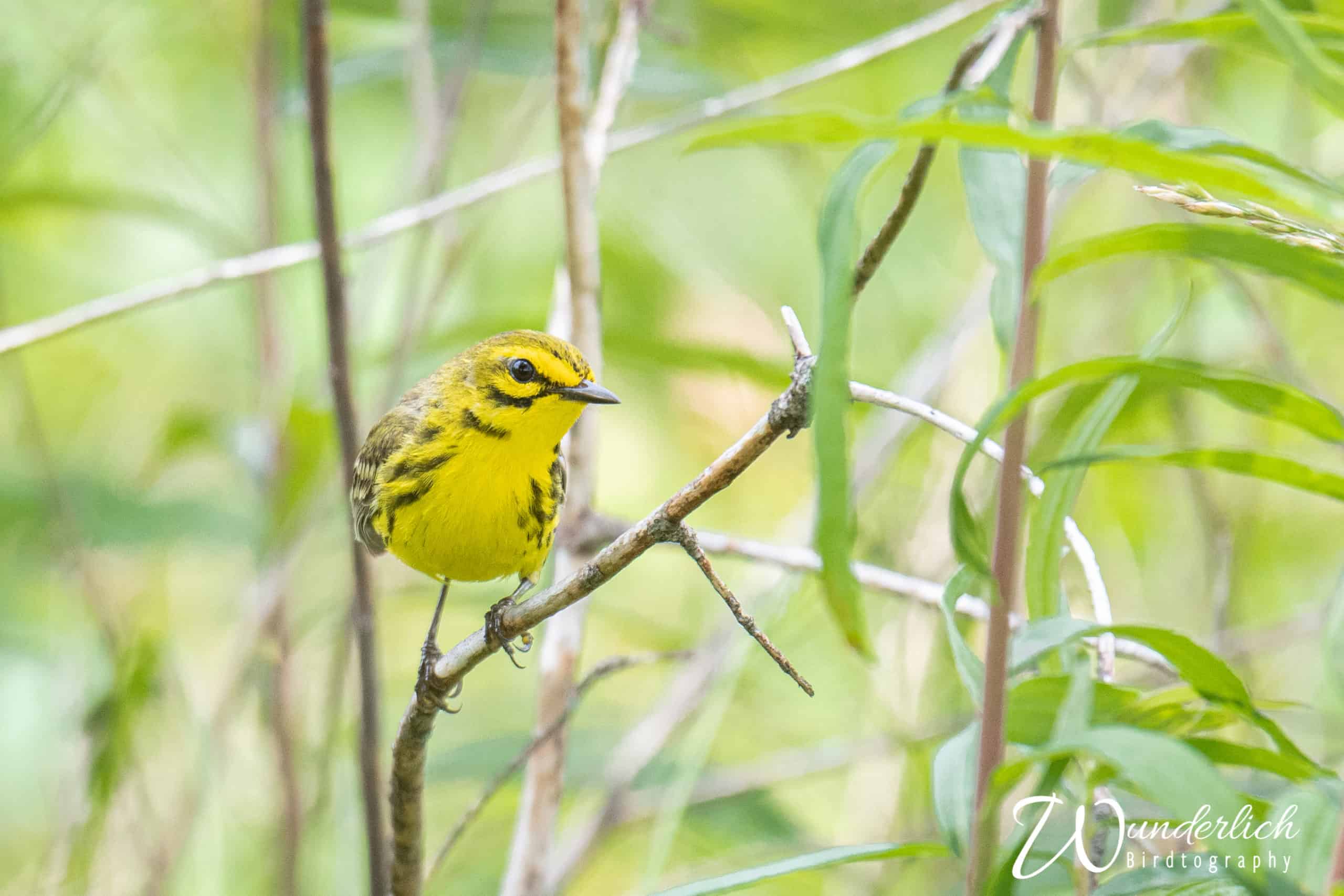
Our tour guests began to arrive the following day, and I was excited to get to Cades Cove to photograph birds and bears. Photographing bears in the Cove is not an easy task because of the craziness of visitors stopping their cars in the middle of the road to catch a glimpse or take a pic of them. Despite the park rangers begging visitors not to park in the middle of the road, it still happens. The result was miles and miles of cars in a “bear jam.”
Our group was always courteous, and we pulled off the road any time we stopped to photograph. Realizing that the main loop in Cades Cove becomes a massive parking lot in the afternoons, our group spent most of our time on Sparks and Hyatt. When we stopped with our cameras and “massive” lenses, most people assumed we could see “all the way to Germany.” Some folks stopped to ask, “What do you see out there?” They were, of course, hoping we would say “Bears,” but our answer was usually “Birds,” to which they responded, “Just birds?” “Yes, just birds.” We would try to tell them some of the birds we were seeing, but in most cases, they drove off before we could begin. “Just birds” quickly became a joke among our group as we started to respond with “Just birds.” Some people would laugh as they drove away. I have to admit that it was a little hurtful when they laughed.

Back to the Birds
As we toured Sparks Lane that first morning, I again heard that ascending zee zee zee zee zee, but now I knew it was a prairie warbler. We were able to get a few quick looks at the bird but not many opportunities to photograph it. Over the next three days, we saw or heard, and sometimes photographed 78 bird species. But the often-faint call of the prairie warbler was taunting me. Some of my fellow birder/photographers said that instead of zee zee zee zee zee, it was saying Bruce Bruce Bruce Bruce Bruce.
On the final day of the tour, after the last tour guest had headed home, I decided to find a spot under the large shady oak tree where we had heard and gotten some quick looks at the prairie warbler. Determined to get a publishable image of the bird, I was prepared to sit there for as long as it took.
After a couple of hours, I heard a prairie warbler’s song, and it was getting closer. Suddenly, it popped up in a brushy area directly in front of me! I stayed calm even though inside I was so excited to get a good look at this beautiful bird. I slowly raised my camera, locked my focus on the bird, and captured a couple of photos. Then as quickly as it had appeared, it was gone again.

While I had snapped a couple of excellent images of the bird as it foraged in its natural habitat, I had hoped the bird would have come closer. Still, I was thrilled, and wished the rest of my Reader Rendezvous pals had been there to see it. Having nothing else to do for the rest of the day and plenty of snacks and drinks in the car, I decided to wait around to see if it would come back. I could still hear it, so I knew it was around. Later its song became louder, and I thought it was in the tree right above my head. Sitting as still as I could, I waited, and when it landed on a branch right in front of me at eye level, PERFECT—life bird dance #1. (See page 26 of the Sept./Oct. 2021 issue of BWD)
The next day, while watching a blue grosbeak, a park ranger stopped and asked me, “What are you looking at?” My reply, of course, was “Just birds.” To my surprise, he didn’t laugh, and he told me that he also was a birder. He informed me of some of the birds he had seen in the park and their locations. But he really piqued my interest when he told me about a trail just outside of Cades Cove where I could find Swainson’s warblers.
The following day was my last in the Smoky Mountains for this trip. Armed with a trail map I had purchased, I headed for the trail the ranger had recommended to see if I could photograph a Swainson’s. As I got out of my car at the trailhead parking lot, I caught a glimpse of a brown bird just ahead of me in the trees. Grabbing my camera from the car, I thought “Could it be this easy? Is this a Swainson’s warbler?” But as I locked my focus on the bird, I was utterly shocked; it wasn’t a Swainson’s warbler—it was a Louisiana waterthrush! Life bird dance #2.

After capturing a few satisfying images of this normally elusive bird, I moved on down the trail to the location that the ranger had described. As I approached a hillside covered with rhododendrons, I could hear a Swainson’s warbler singing nearby. Again, learning the bird’s distinctive sound had clued me into its presence and pinpointed its location. This species tends to stay in the understory and is challenging to spot and photograph in the open. But I did manage to capture a couple of images. Life bird dance #3.
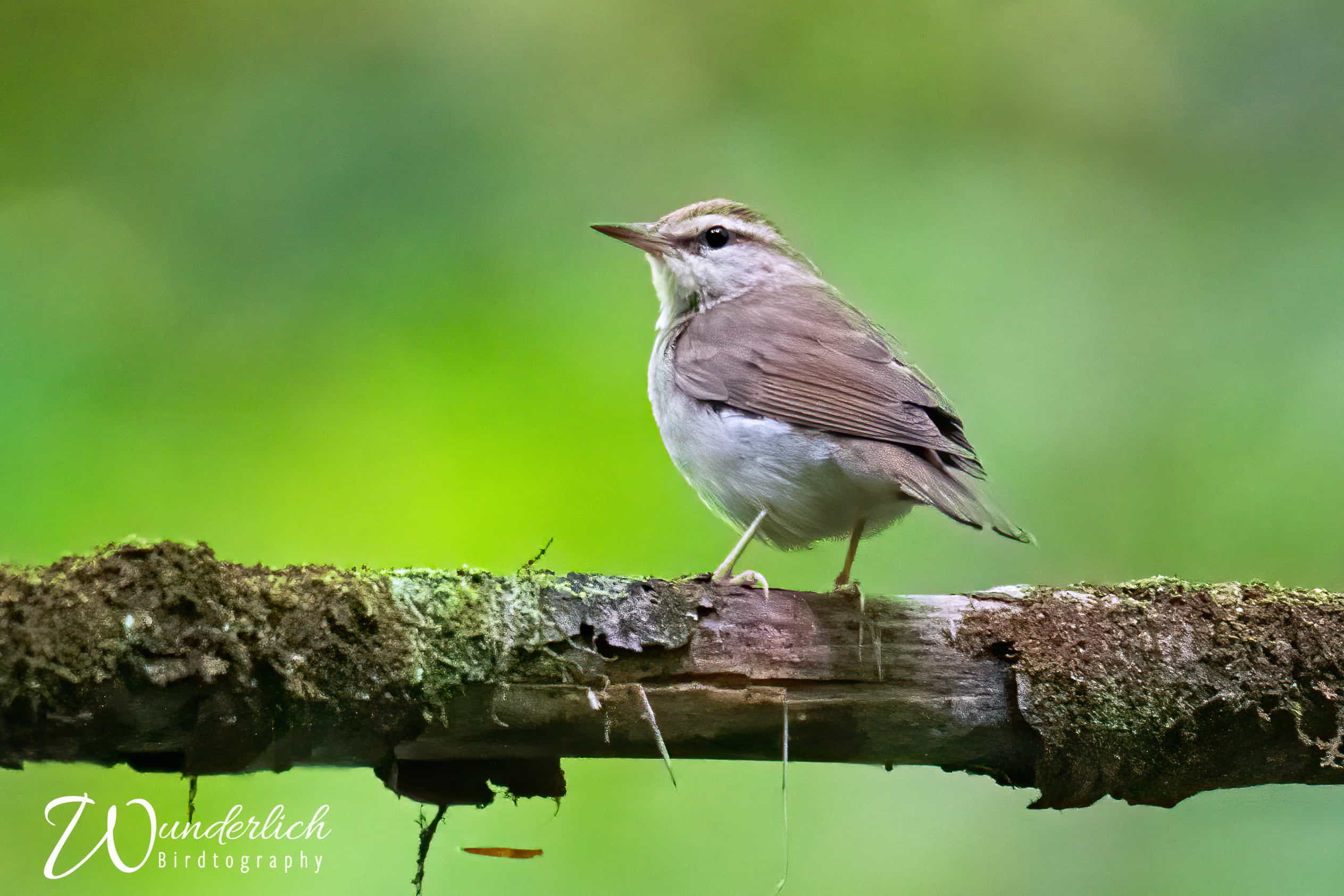
Birdtography typically requires patience. Lots of patience. But on rare lucky occasions, being in the right place at the right time is all that’s required.
Nine days and three life birds in the Smokies… it was time to head home.

